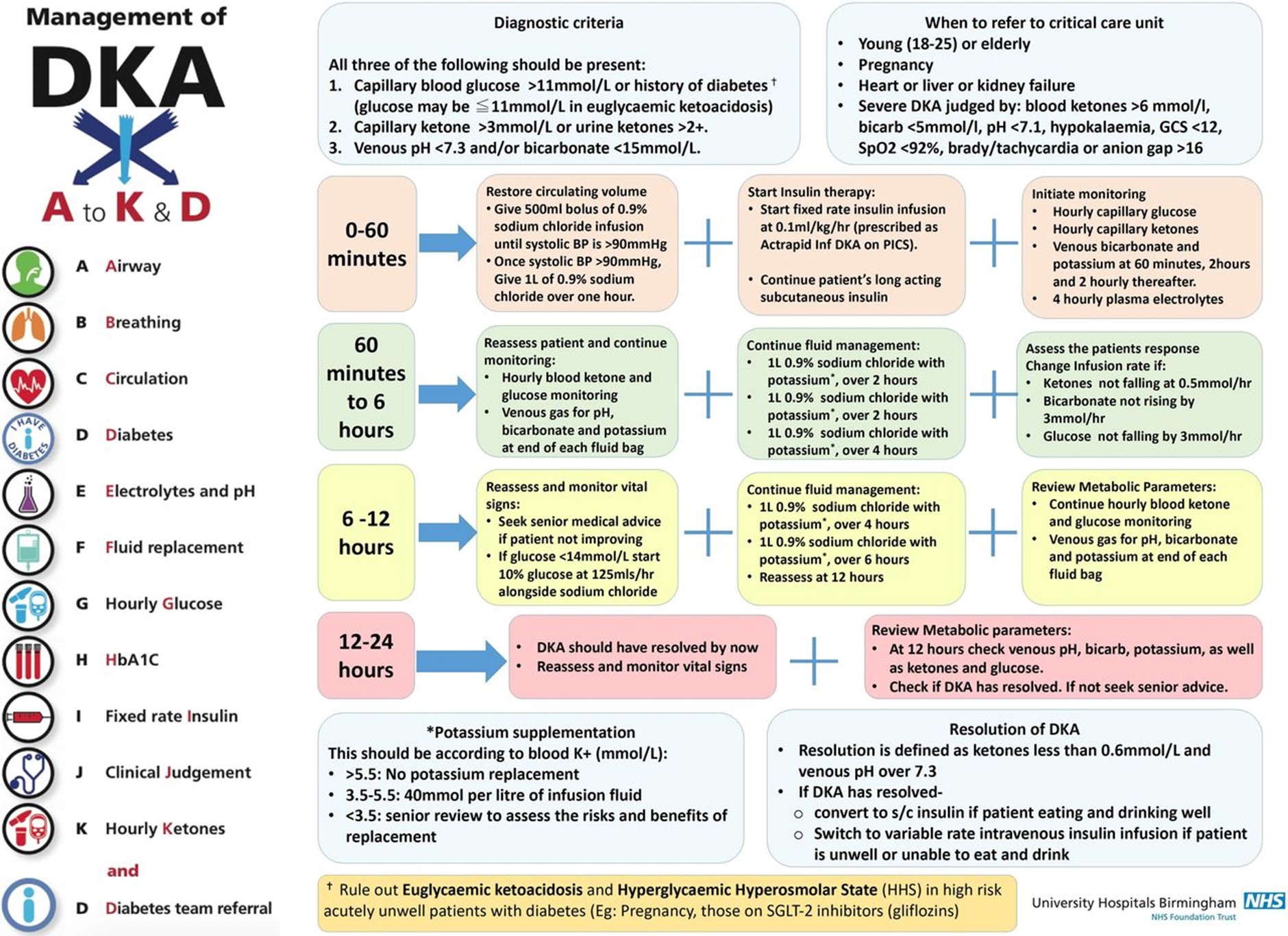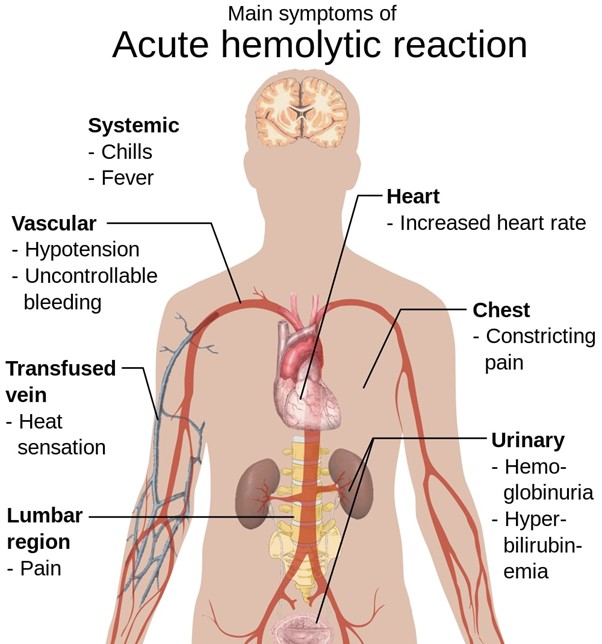A nurse is caring for a client in diabetic ketoacidosis (DKA). Which of the following is the priority intervention by the nurse?
initiate a continuous IV insulin infusion
Begin bicarbonate continuous IV infusion
Check potassium levels
Administer 0.9% sodium chloride
The Correct Answer is A
Choice A reason:
Initiating a continuous IV insulin infusion is the first priority. The priority intervention for a client in diabetic ketoacidosis (DKA) is to normalize blood glucose levels and reverse the ketoacidosis. Initiating a continuous IV insulin infusion is essential to rapidly lower the elevated blood glucose levels and counteract the metabolic acidosis associated with DKA.
Choice B reason:
Beginning a bicarbonate continuous IV infusion is generally not the priority in DKA management. While metabolic acidosis is a concern in DKA, insulin therapy and fluid resuscitation are typically the initial focus of treatment.

Choice C reason:
Checking potassium levels is important since potassium imbalances are common in DKA. However, while this is important, it is not the first priority. It's important to ensure that insulin therapy has been initiated before addressing potassium levels.
Choice D reason:
Administering 0.9% sodium chloride (normal saline) is a crucial part of DKA treatment but it is not the first priority as it helps correct dehydration and electrolyte imbalances. However, starting insulin therapy to address the underlying metabolic issue takes precedence.
Nursing Test Bank
Naxlex Comprehensive Predictor Exams
Related Questions
Correct Answer is D
Explanation
Choice A Reason:
Blurred vision is incorrectly. Blurred vision is not a common complication of immobility and is more likely related to other factors.
Choice B Reason:
Polyuria is incorrect. Increased urination (polyuria) is not directly related to immobility; it can be caused by various factors, such as fluid intake, medications, or underlying medical conditions.
Choice C Reason:
Diarrhea is incorrect. While immobility can contribute to constipation due to reduced activity and decreased bowel motility, it is not typically associated with diarrhea
Choice D Reason:
Confusion is correct. Confusion can be a potential complication of immobility in bedridden clients. Prolonged immobility can lead to reduced sensory stimulation, altered sleep patterns, and decreased cognitive engagement, which can contribute to confusion and cognitive decline.
Correct Answer is C
Explanation
Choice A Reason:
Bradycardia - Bradycardia is not a typical symptom of a haemolytic transfusion reaction.
Choice B Reason;
Hypertension - Hypertension is not a common manifestation of a haemolytic transfusion reaction.
Choice C Reason:
Back pain A haemolytic transfusion reaction is a severe and potentially life-threatening complication that can occur when the immune system reacts against the transfused red blood cells. Back pain is a classic symptom of a haemolytic transfusion reaction. It is often accompanied by other symptoms such as fever, chills, chest pain, dyspnoea, nausea, vomiting, haematuria, and hemoglobinuria (presence of haemoglobin in the urine).
Choice D Reason:
Chills - Chills can occur in various types of transfusion reactions, including haemolytic reactions, but they are not as specific as back pain for indicating a haemolytic transfusion reaction.

Whether you are a student looking to ace your exams or a practicing nurse seeking to enhance your expertise , our nursing education contents will empower you with the confidence and competence to make a difference in the lives of patients and become a respected leader in the healthcare field.
Visit Naxlex, invest in your future and unlock endless possibilities with our unparalleled nursing education contents today
Report Wrong Answer on the Current Question
Do you disagree with the answer? If yes, what is your expected answer? Explain.
Kindly be descriptive with the issue you are facing.
